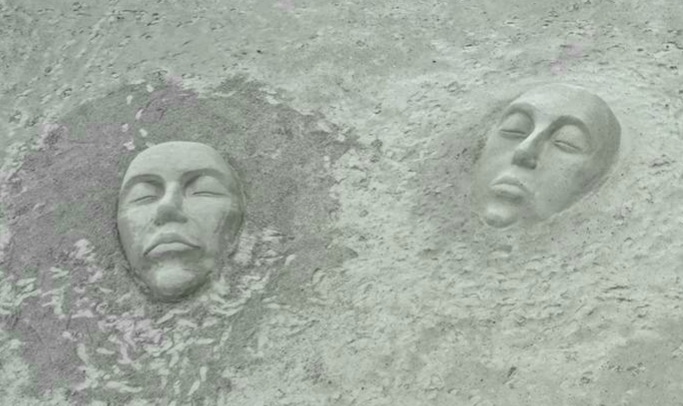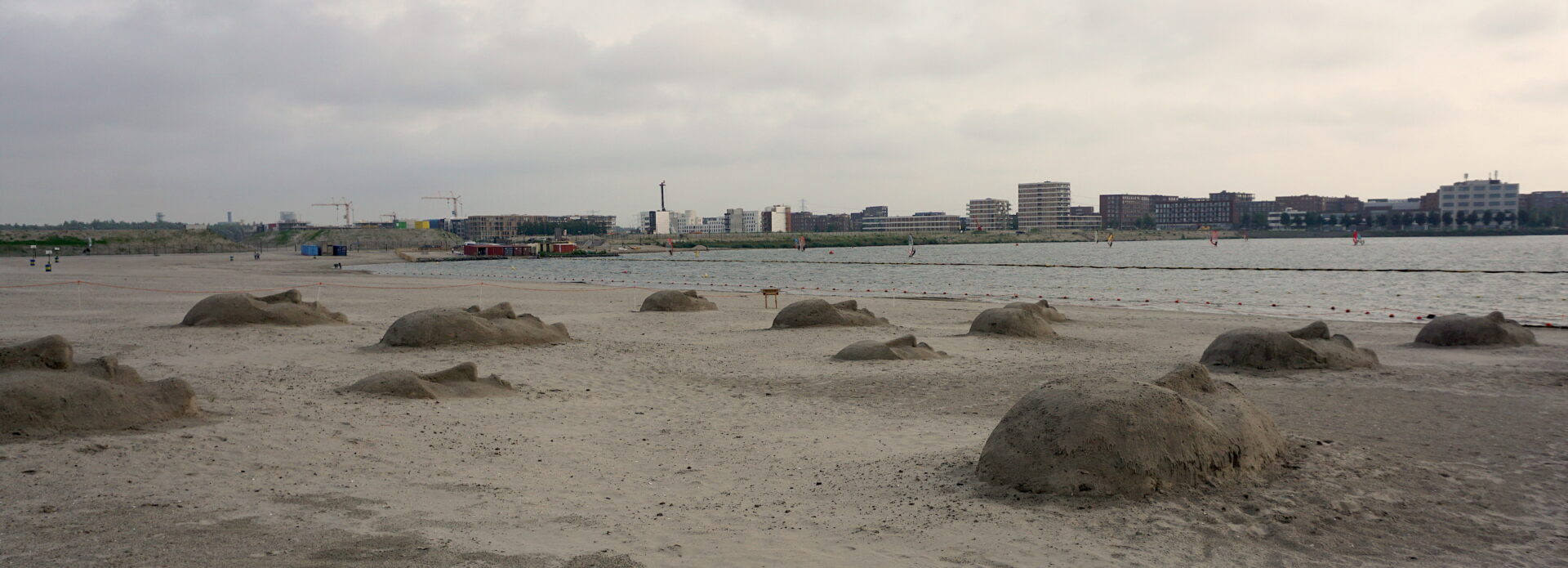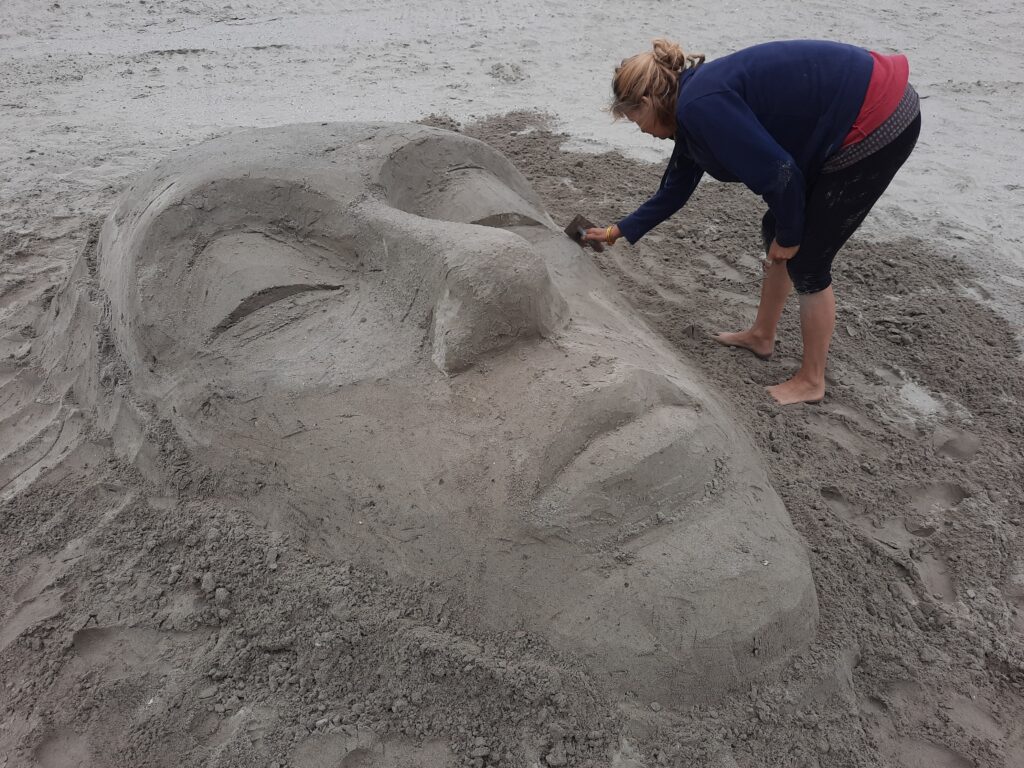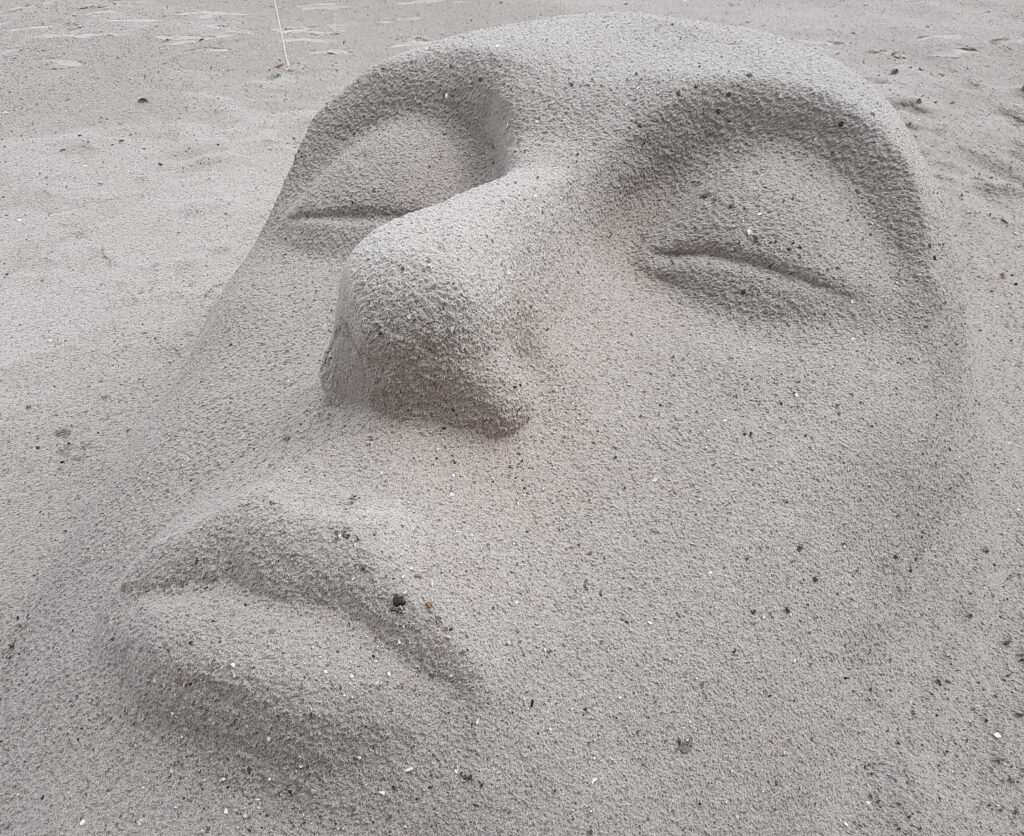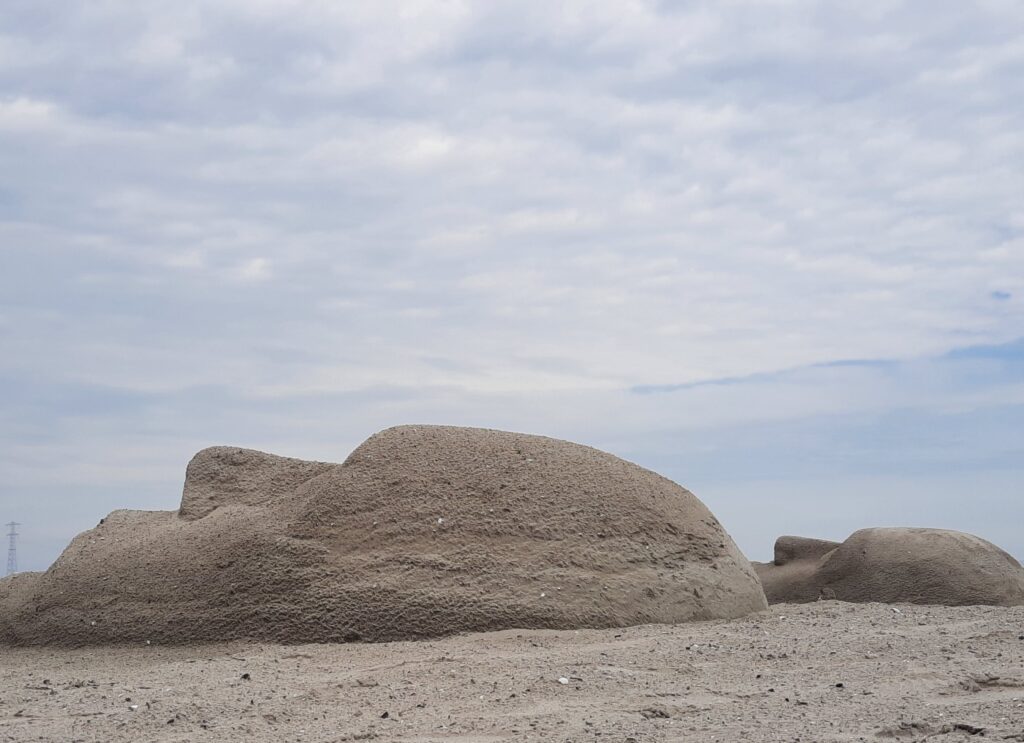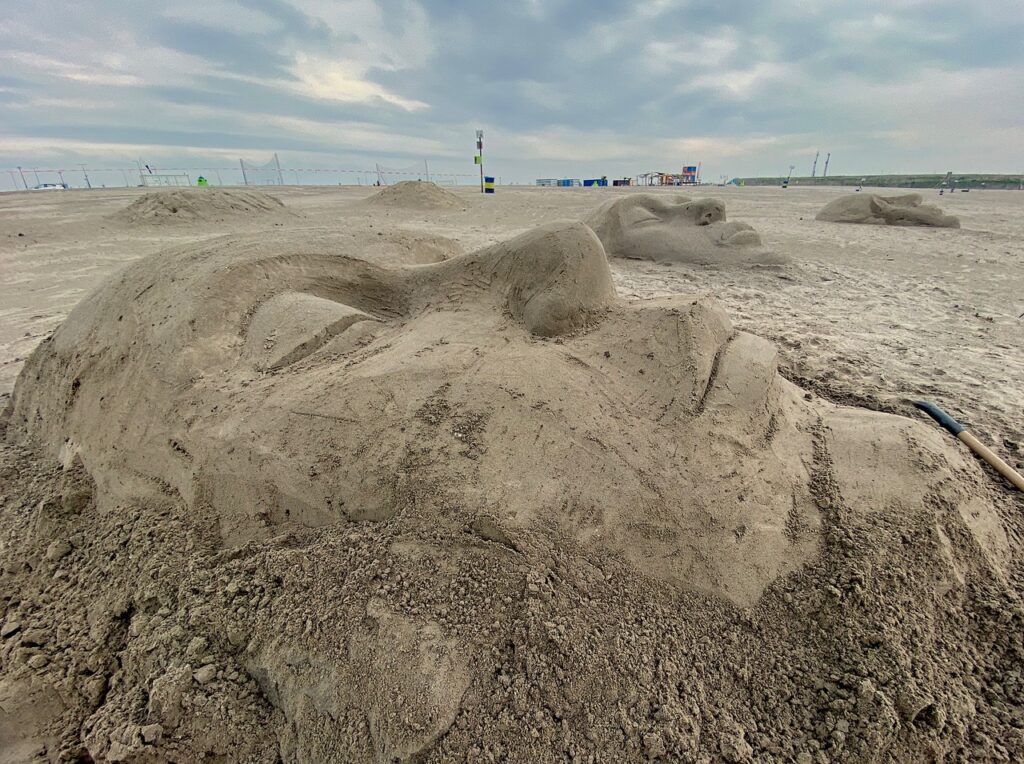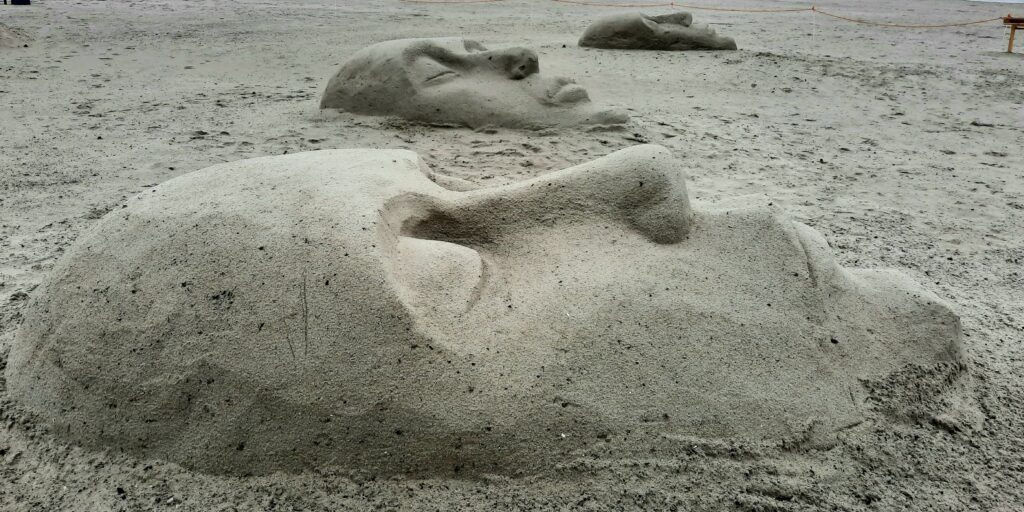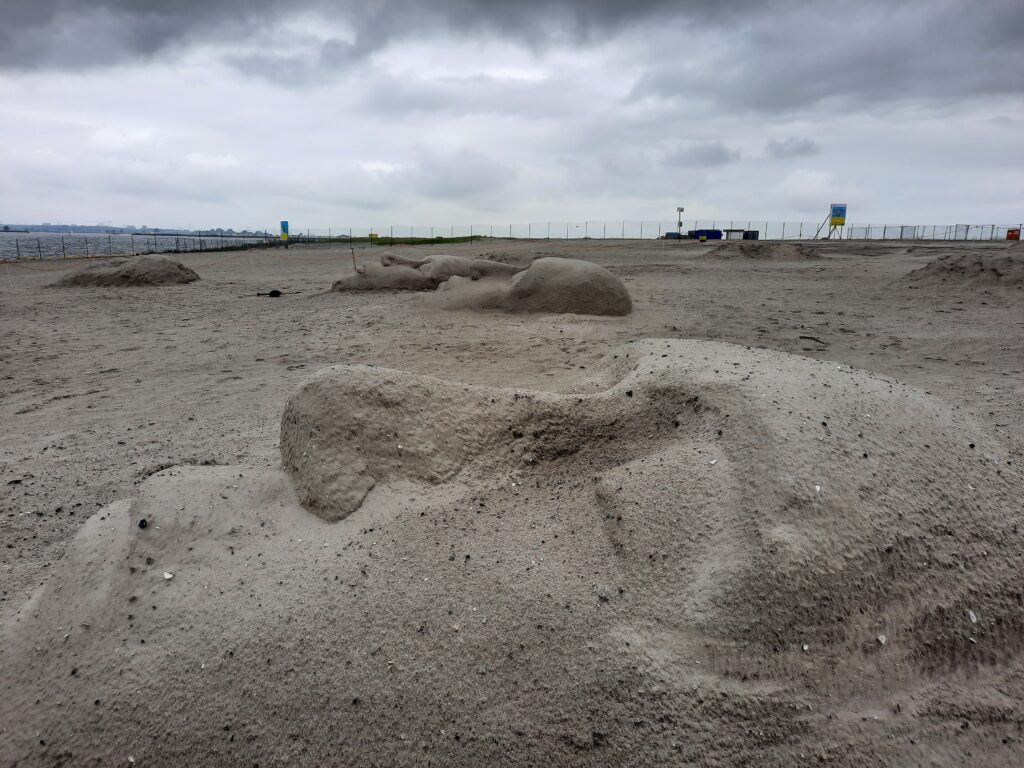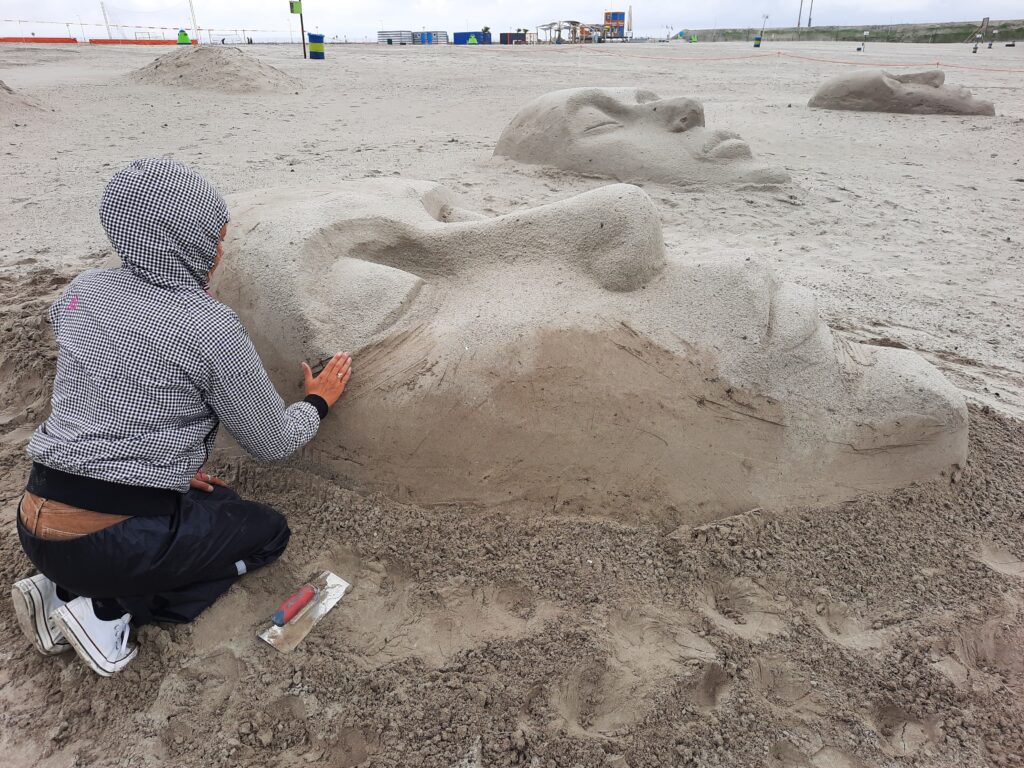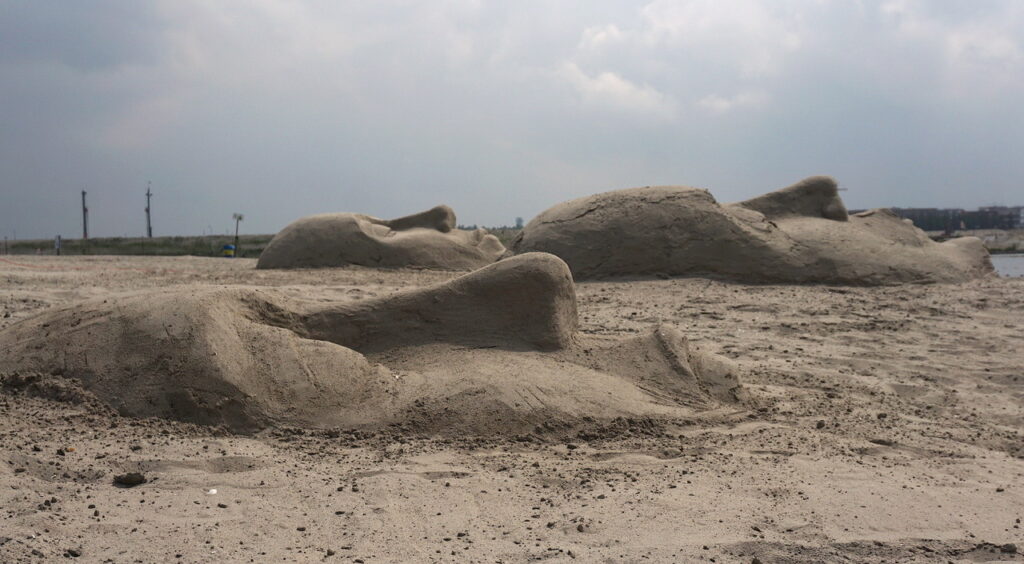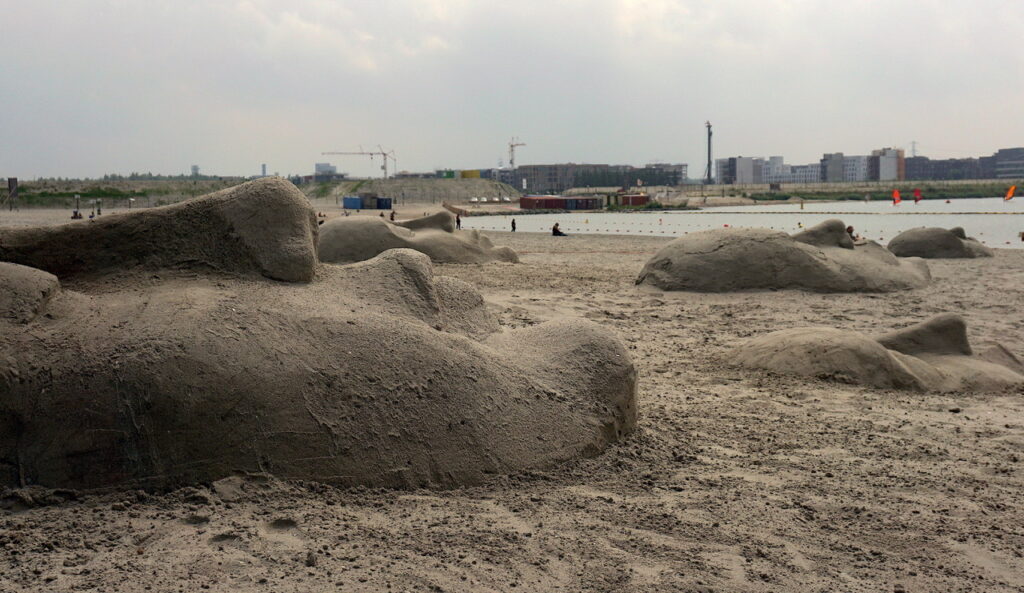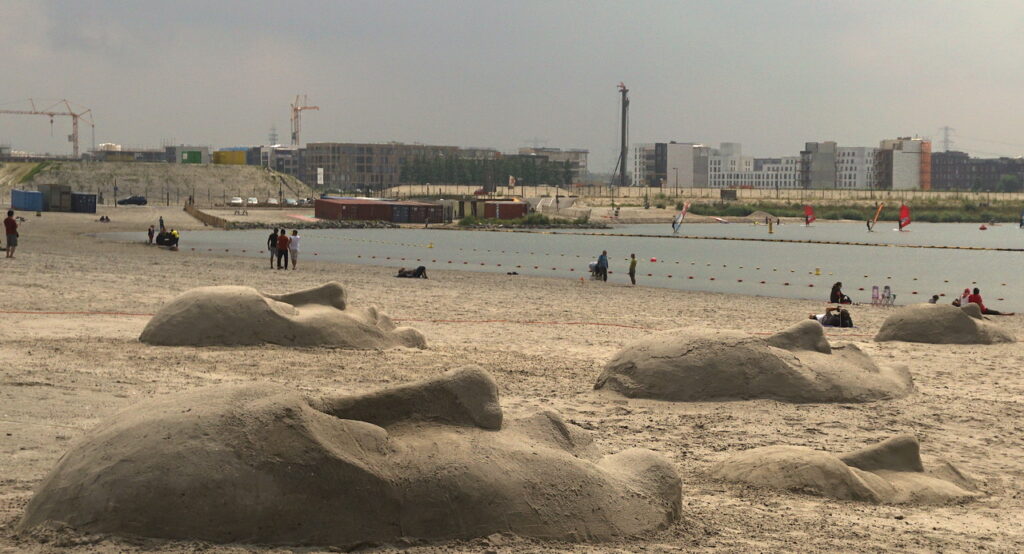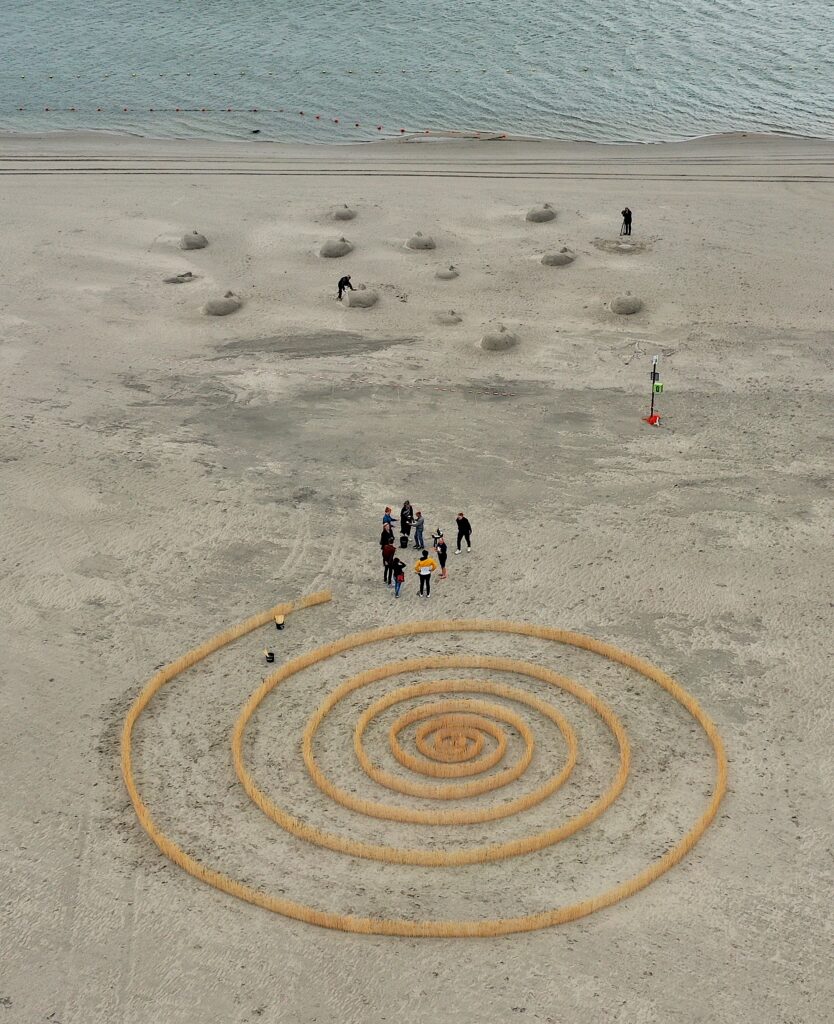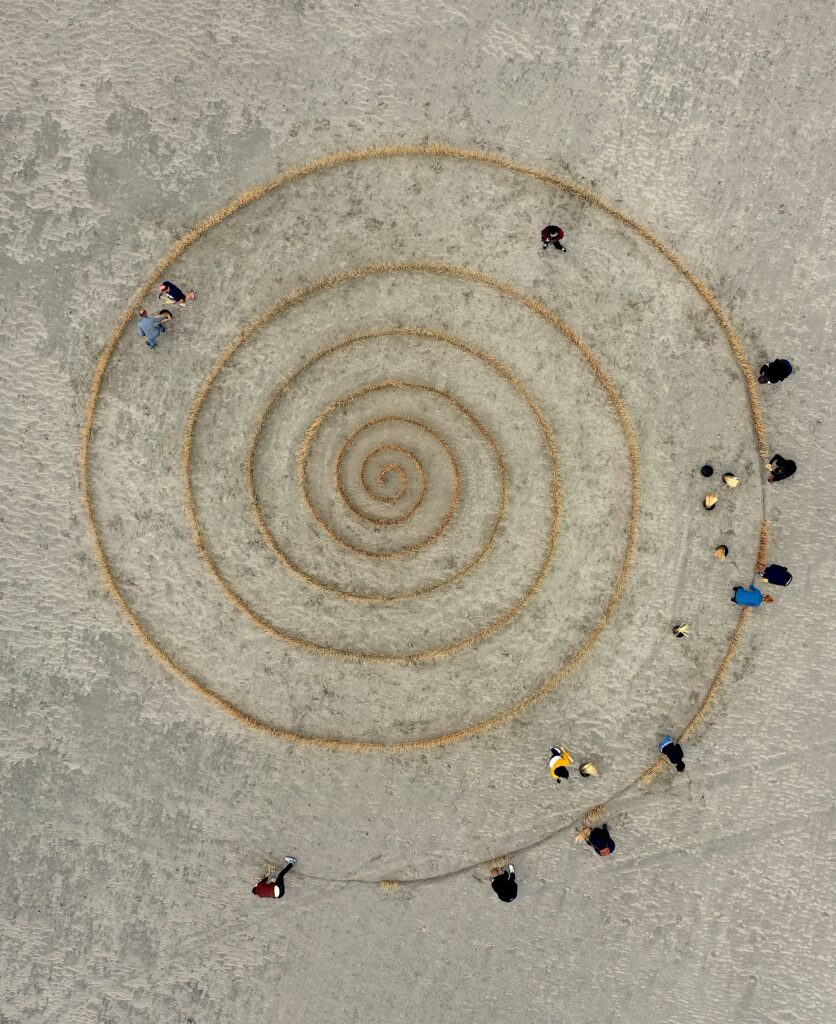Beach of Strandeiland – IJburg, Amsterdam
On the new beach of Strandeiland, SLeM presents the art installations ‘Sandscapes’ and ‘Woodlands’.
Sandscapes
The concept behind the ‘Sandscapes’ made by Italian-Danish artist Rikke Munkholm Laursen is ‘We are Nature’. Sandscapes’ stands for recognition and connection. Everyone and everything is part of the great, wonderful and complex ecosystem of planet Earth. Sandscapes’, developed in cooperation with Bruno Doedens – SLeM, has previously been shown in the Netherlands on Terschelling Island, in Zijpe NH and in Scheveningen. They can be seen at Strandeiland until 16 July 2021. While new ‘Sandscapes’ are being made, the old ones will be blurred by the wind: everything moves, everything changes.
Woodlands
With more than 50,000 split bamboo sticks, we make poetic drawings in the sand. The sticks are planted with the help of volunteers. Every day a new scene, for ten days, in three periods. Together, the ten scenes represent the essay ‘Planet Paradise’ by Bruno Doedens. He claims that new stories help us to reinvent ourselves and encourage us to become a ‘clean species’ again. See www.planetparadise.nl
